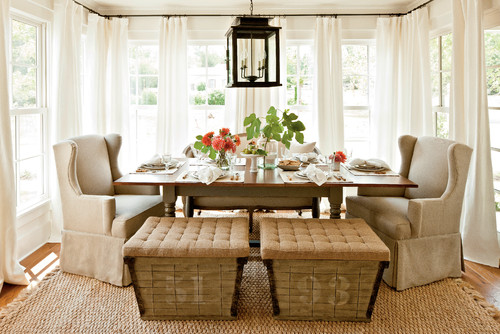By Terri Williams | Sep 24, 2019

Window treatments are often seen as an essential accessory to your room’s design. Draperies, shades, shutters, and blinds can enhance your view, provide privacy, let the light in, and keep the heat and cold out.
However, selecting the right window treatments can be a daunting task because there are so many styles to choose from. Further complicating things: Certain types of window treatments complement only certain types of windows. For example, you may love the dramatic look of long, pooling drapes, but that doesn’t mean they’ll suit your living room space.

–– ADVERTISEMENT ––

To untangle any confusion you may have about window treatments, we got the lowdown on how to select them, determine the appropriate length and width, and other essential decorating info.
Related Articles
- 7 Bedroom Design Mistakes That Could Affect Your Sweet Dreams – and Your Home’s Value
- A Transparent Look at Energy-Efficient Windows: Cost, Effectiveness, and More
- Curtain Call: 3 Surprising Ways Drapes Can Help Sell Your Home
Is privacy important?
The first factor to consider is the level of privacy you want in the room. Light-filtering shades will allow a partial view of the outdoors while still letting the sunshine in. Blackout shades, on the other hand, will make the room completely private and are ideal for bedrooms and bathrooms.
Taking the room’s temperature
A room’s exposure to sunlight often affects the temperature of the room.
“Windows facing south or west can have a great deal of sunlight, which may require products like cellular shades to reduce the heat transfer,” says Rachel Hyslop at Graber Blinds.
On the other hand, high-humidity rooms like bathrooms or basements are better off with moisture-resistant faux wood blinds or shades made of composite materials, she says.
Calculating length and width

Determining the right dimensions for your window treatments isn’t as simple as measuring your window opening. That would be too easy!
Dmitry Portnoy, director of Aztech Doors and Windows in Toronto, recommends installing the window treatments on the wall above the windows.
“This way it does not damage the window, and it allows you to replace or repair the window without changing the style or dimensions of your window treatments,” he says.
Typically, window treatments should be set 4 inches above the window, but Portnoy says they can be installed higher, even at the ceiling. In fact, that’s one of our favorite tricks to make a room look taller.
So, to determine the length needed for window treatments like curtains or Roman shades, measure at least 4 inches above the top of the window.
But how long should your window treatments be? That all depends on the type of panel you select.
According to Bruce Heyman, owner of Metropolitan Window Fashions in Green Brook, NJ, curtains that go all the way to the floor create a more formal look than those that end just below the sill.
“However, below the sill can be more practical if you have an AC unit, furniture, or a little furry friend,” he says.
Most premade (as in, not custom) curtains come in lengths of 63, 84, 95, 108, and 120 inches. Widths of curtain panels vary, but most are 45 inches wide.
For blinds and shades (as opposed to curtains or draperies), Hyslop says mounting them inside the window casing will provide the most custom look since the window treatment will fit snugly in the window.
What to do with wall-to-wall windows

Photo by Tonya Hopkins Interior Design
Wall-to-wall windows present a unique challenge when shopping for window treatments. The curtains you choose shouldn’t obstruct your view, but they should be able to block out any harsh sunlight.
Hyslop recommends solar shades because they are designed to reduce glare, block UV rays, and provide a bit of privacy while still allowing you to see outside. She would also frame the windows with drapery side panels for a more refined look.
Cord safety
Some window treatments come with cords, but be aware that these can present a choking hazard for children and pets.
The Consumer Product Safety Commission recommends that you replace corded window coverings with cordless options.
However, if you have corded window treatments, Hyslop recommends that you move all beds, cribs, toys, and furniture away from those windows.
“Keep all window-covering cords out of children’s reach by shortening them or securely wrapping them around a cord cleat,” she says.

Comments are closed